Most people have a passing knowledge of joshua tree plants from the band U2’s famous album cover, The Joshua Tree (back when music was procured via an “LP” instead of a “download”). A glance at that album cover shows one spindly little orphan in the background, but a day-trip to Joshua Tree National Park yielded 792,000 acres of otherworldly formations and photographic opportunities around every bend!

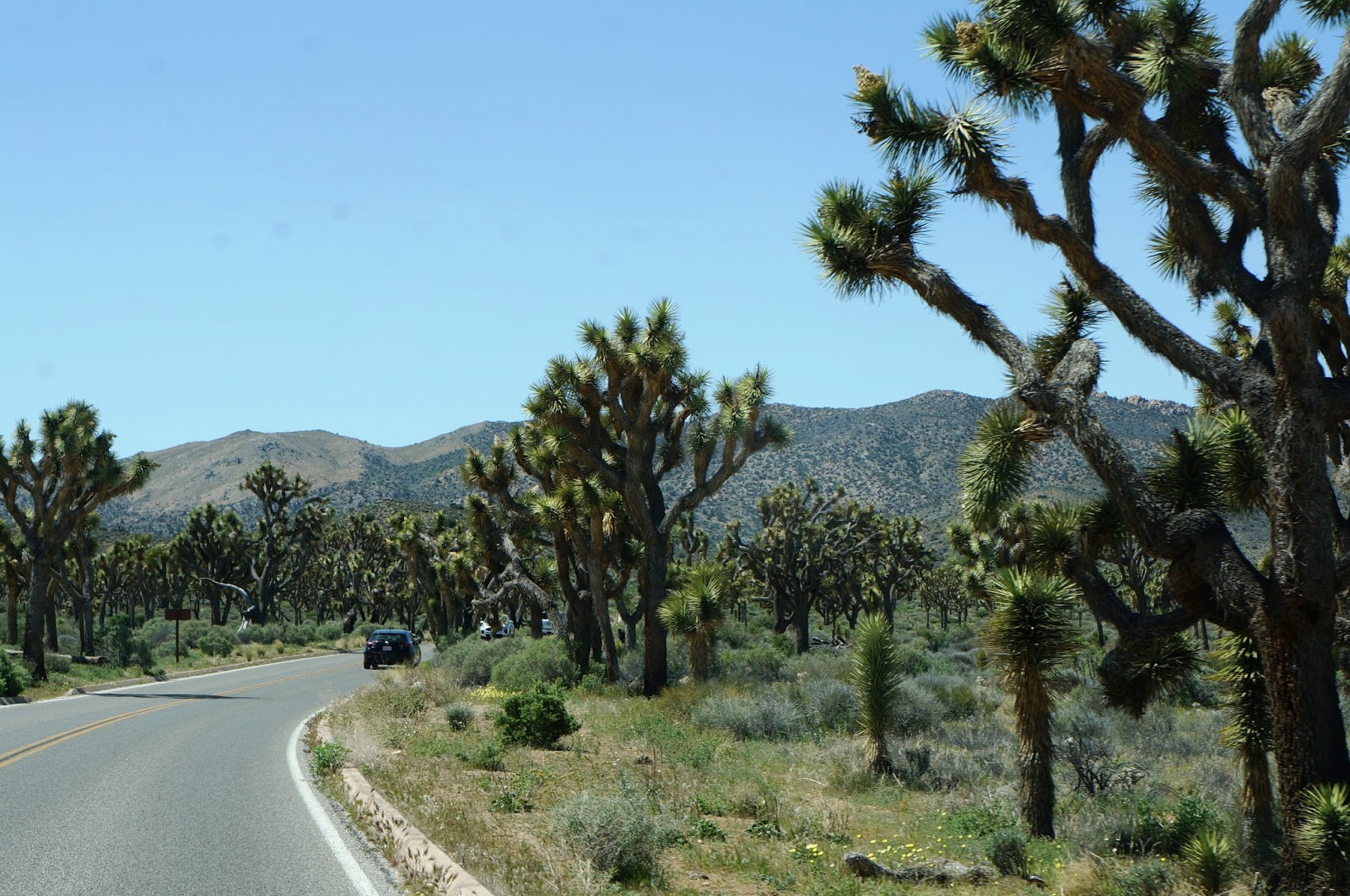
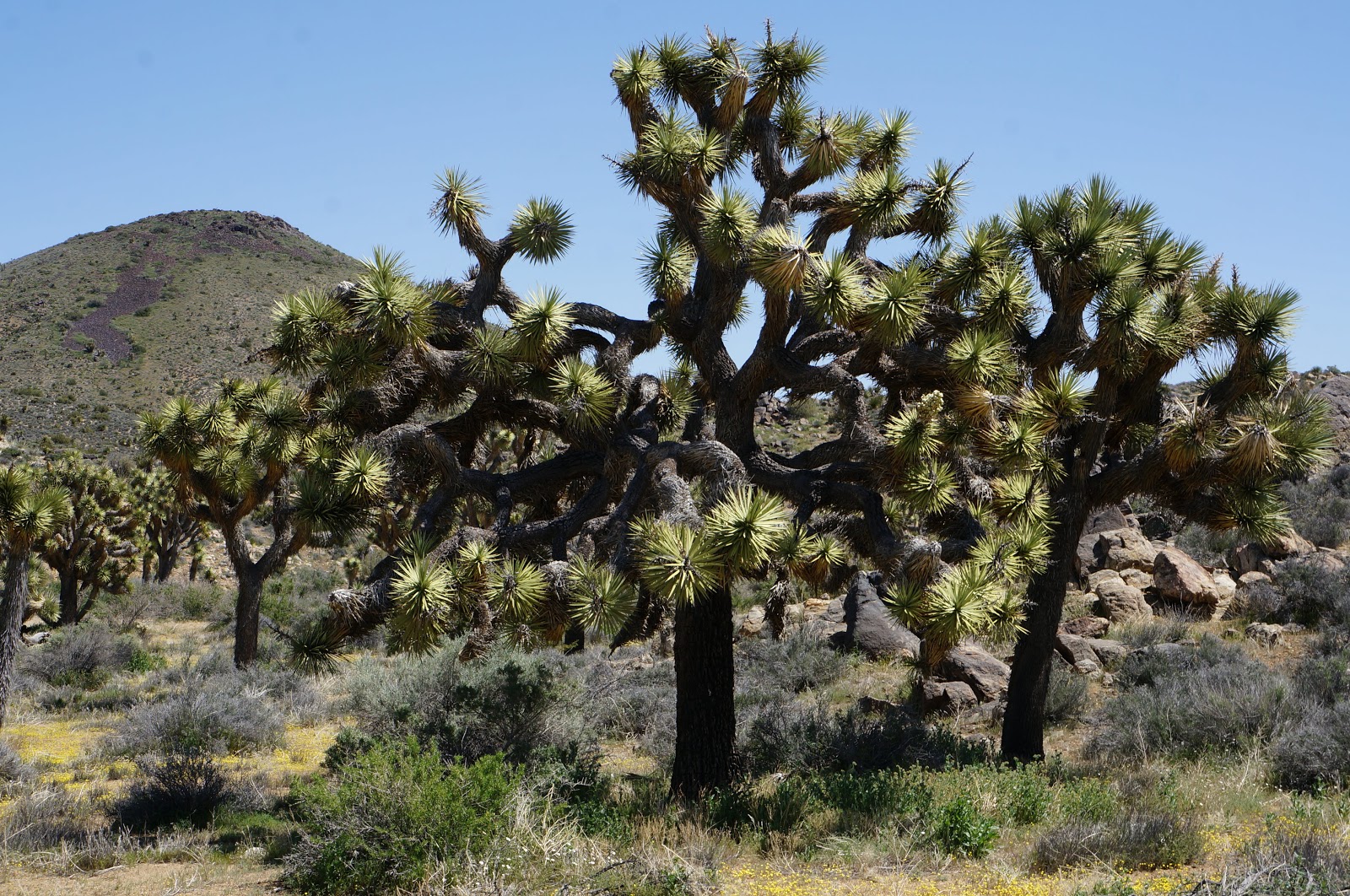

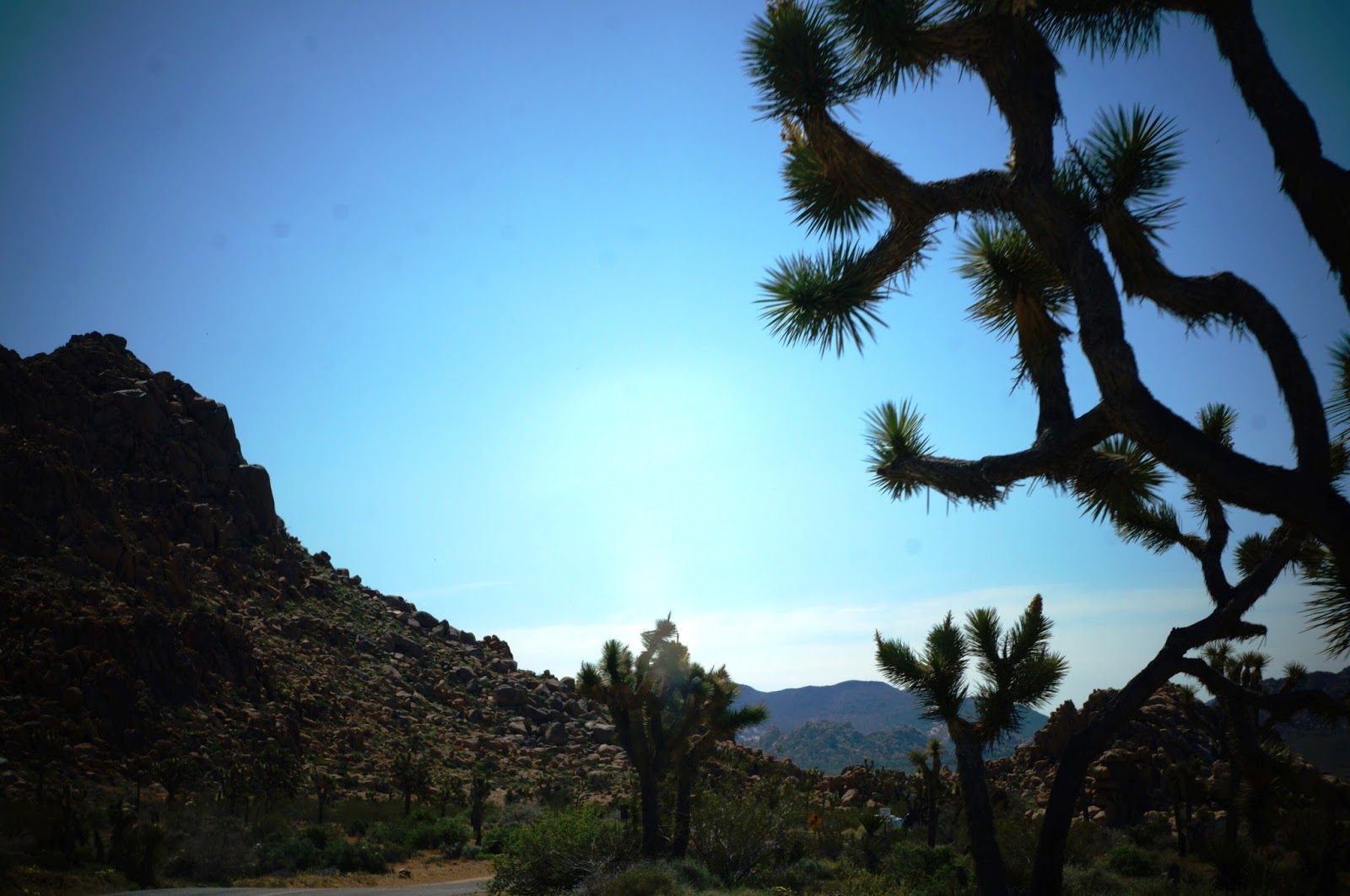
U2 actually took their photo 200+ miles away in Death Valley, but I digress. Here at Joshua Tree, after one of the wettest winters on record and the end of a five-year drought, California’s profusion of blooming plants and wildflowers gave new life to the otherwise gray-gray-and-more-gray desert, with many plants blooming where they have stood blossom-free for a very long time.
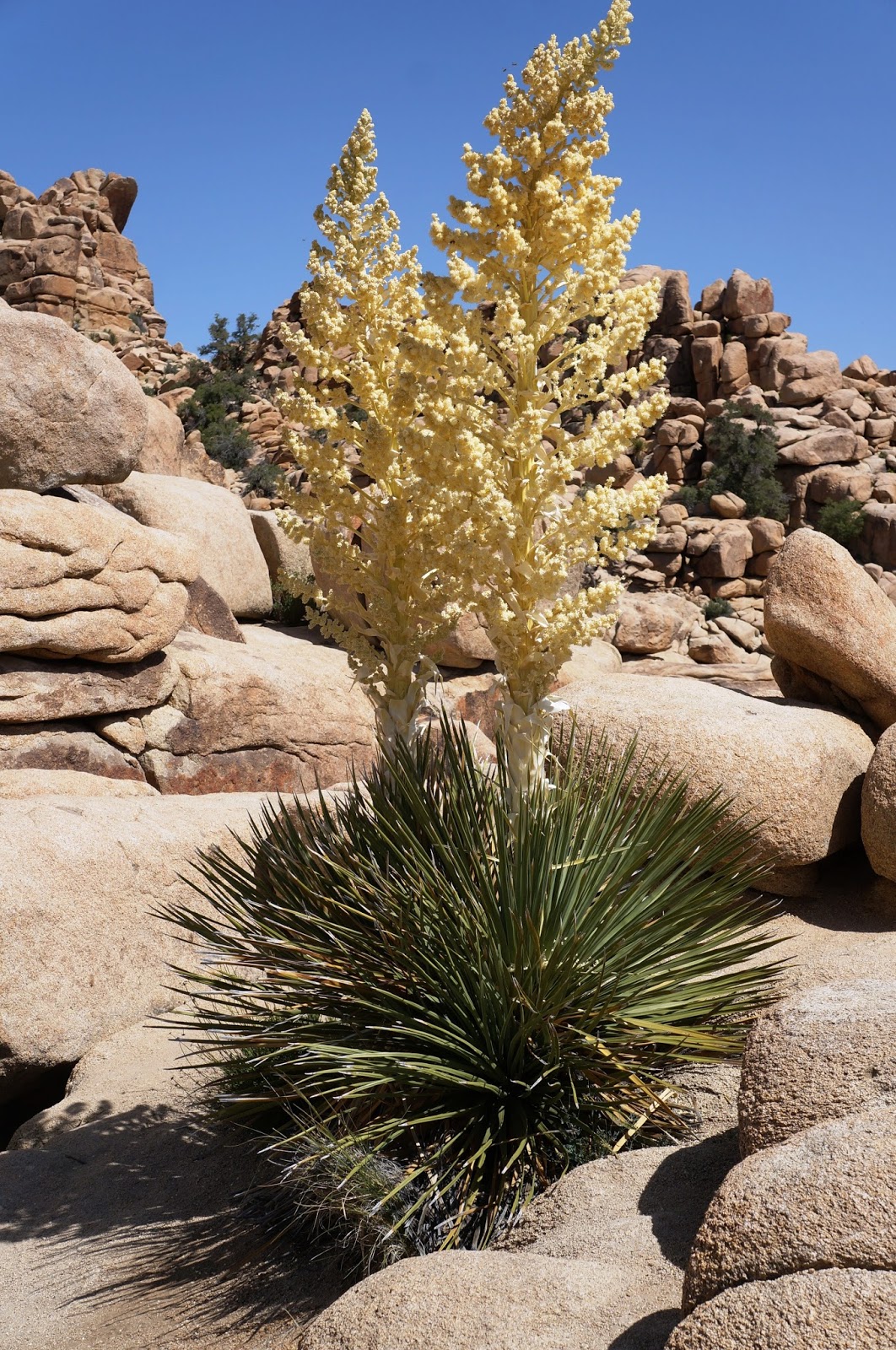
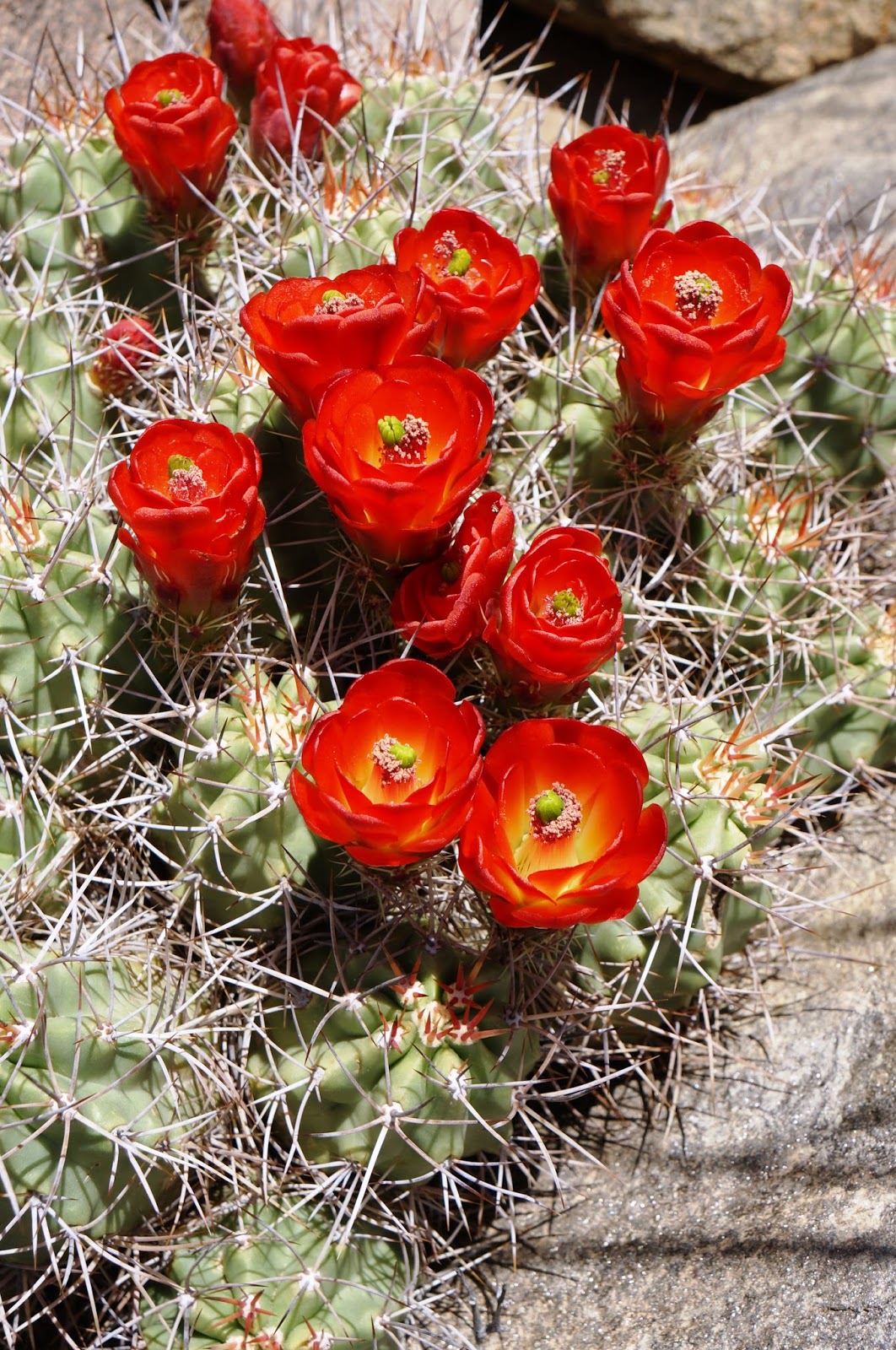
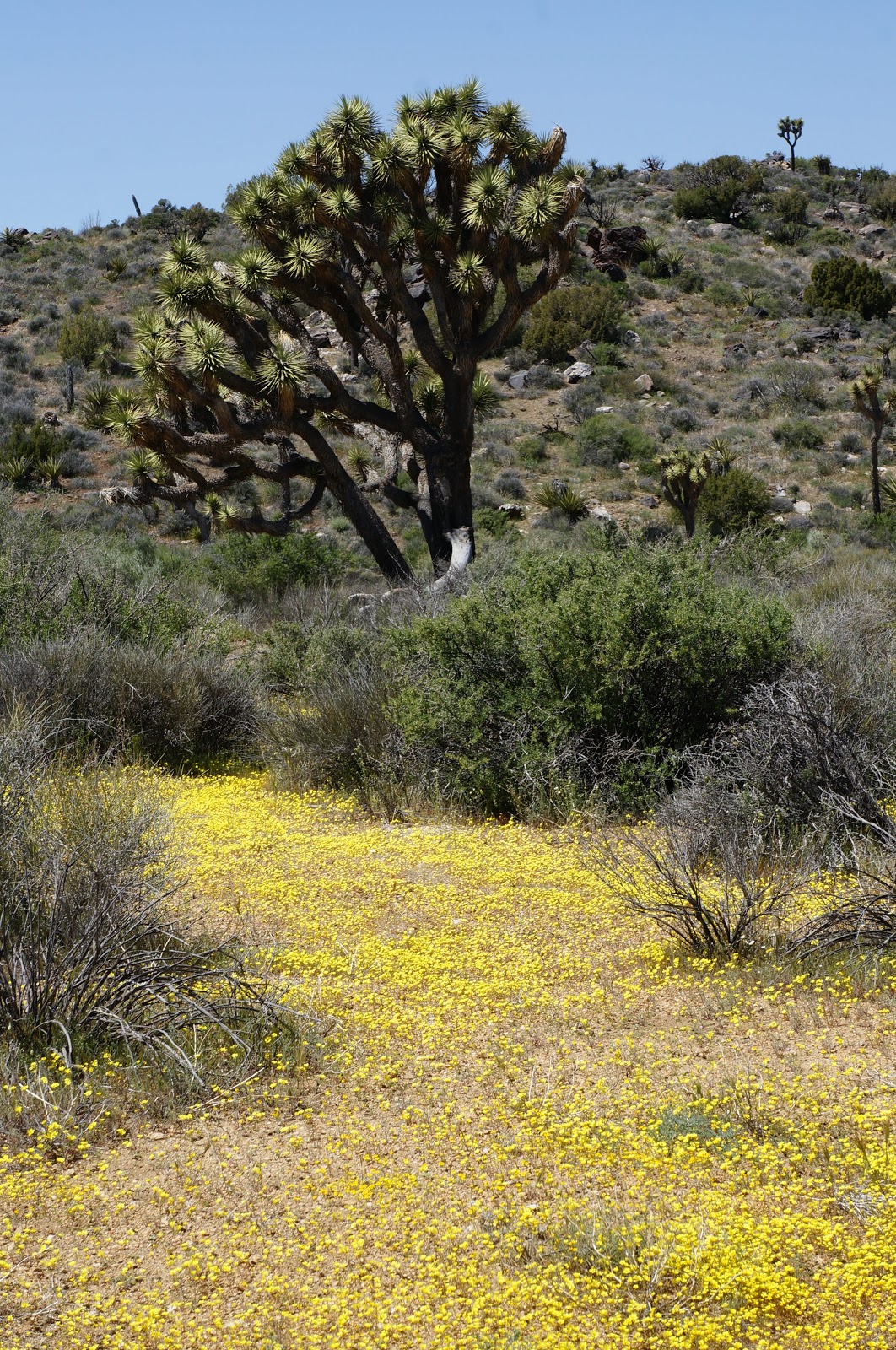
Joshua trees are not trees (even though they are called trees). They are also not cactus (even though they have spiky, succulent leaves). They are members of the agave family, which means they are related to tequila, which is all we needed to know to become big fans.
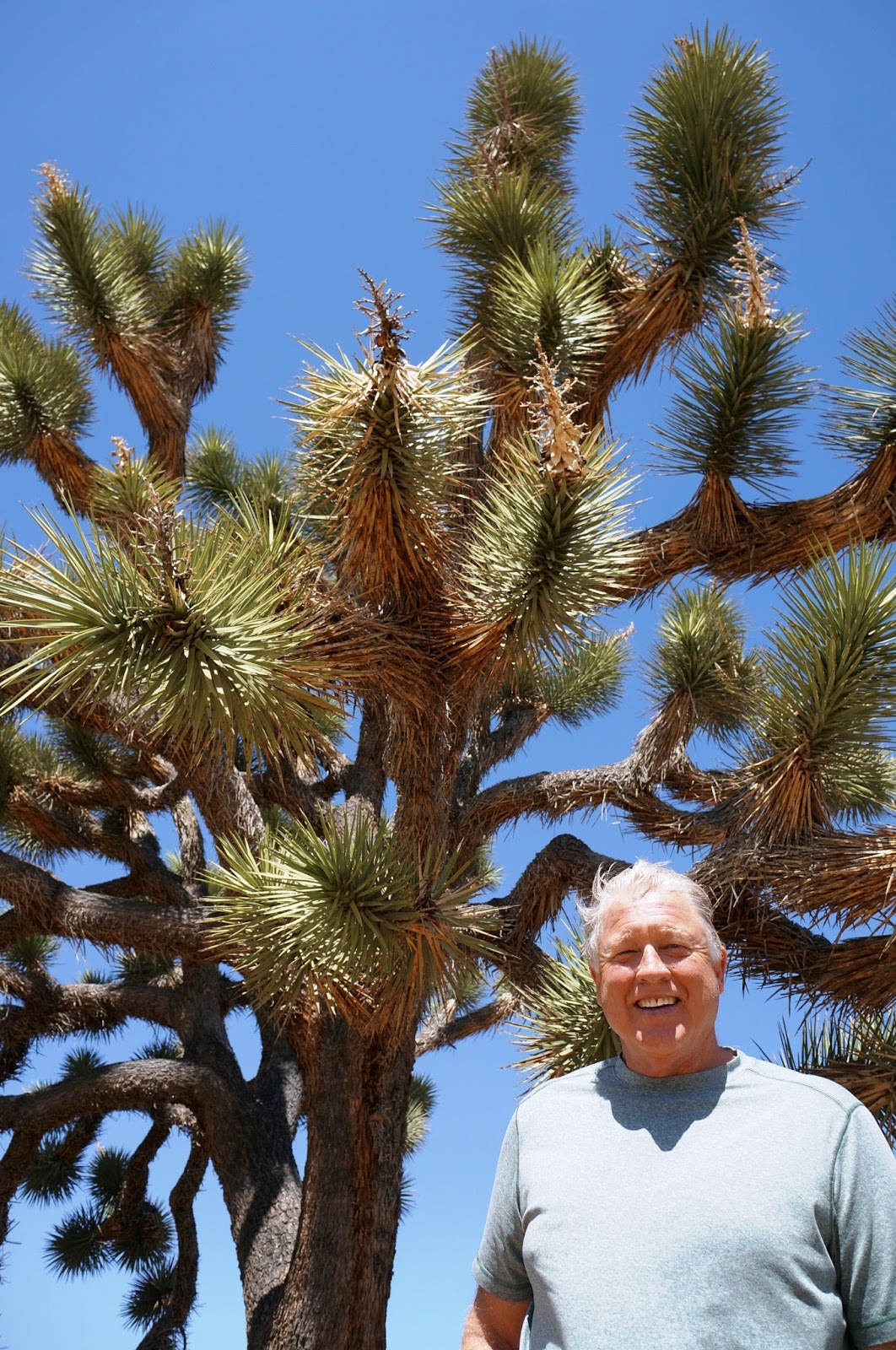
It’s hard to know how old a joshua tree is (kinda like Zsa Zsa Gabor). The insides are fibrous and have no growth rings, but smart scientists believe a typical lifespan is 150 years. The tallest joshua tree in the park, the “Barber Pole,” is 43 feet tall! We didn’t find that one, but lots of others were available to make us feel puny!
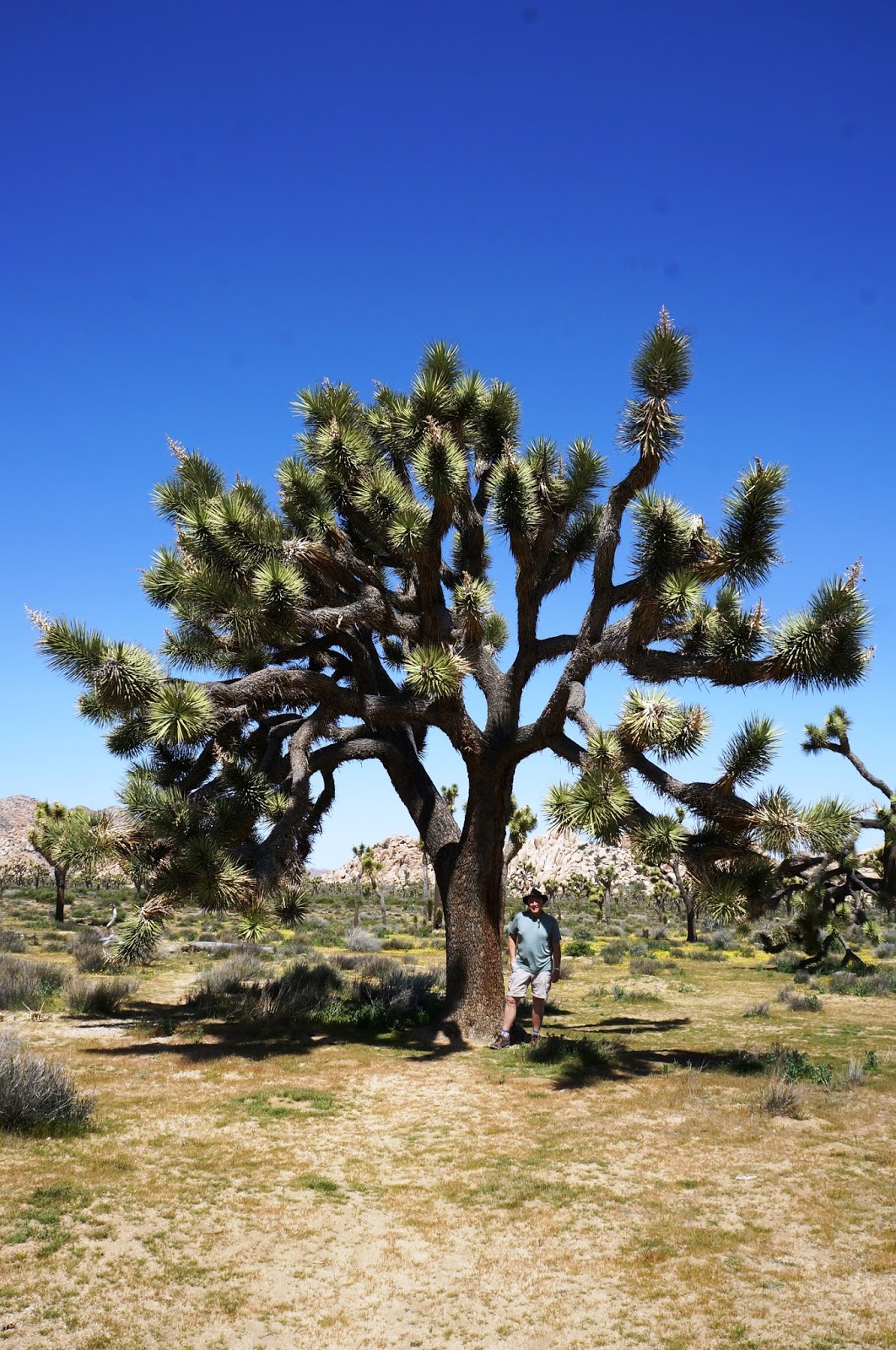
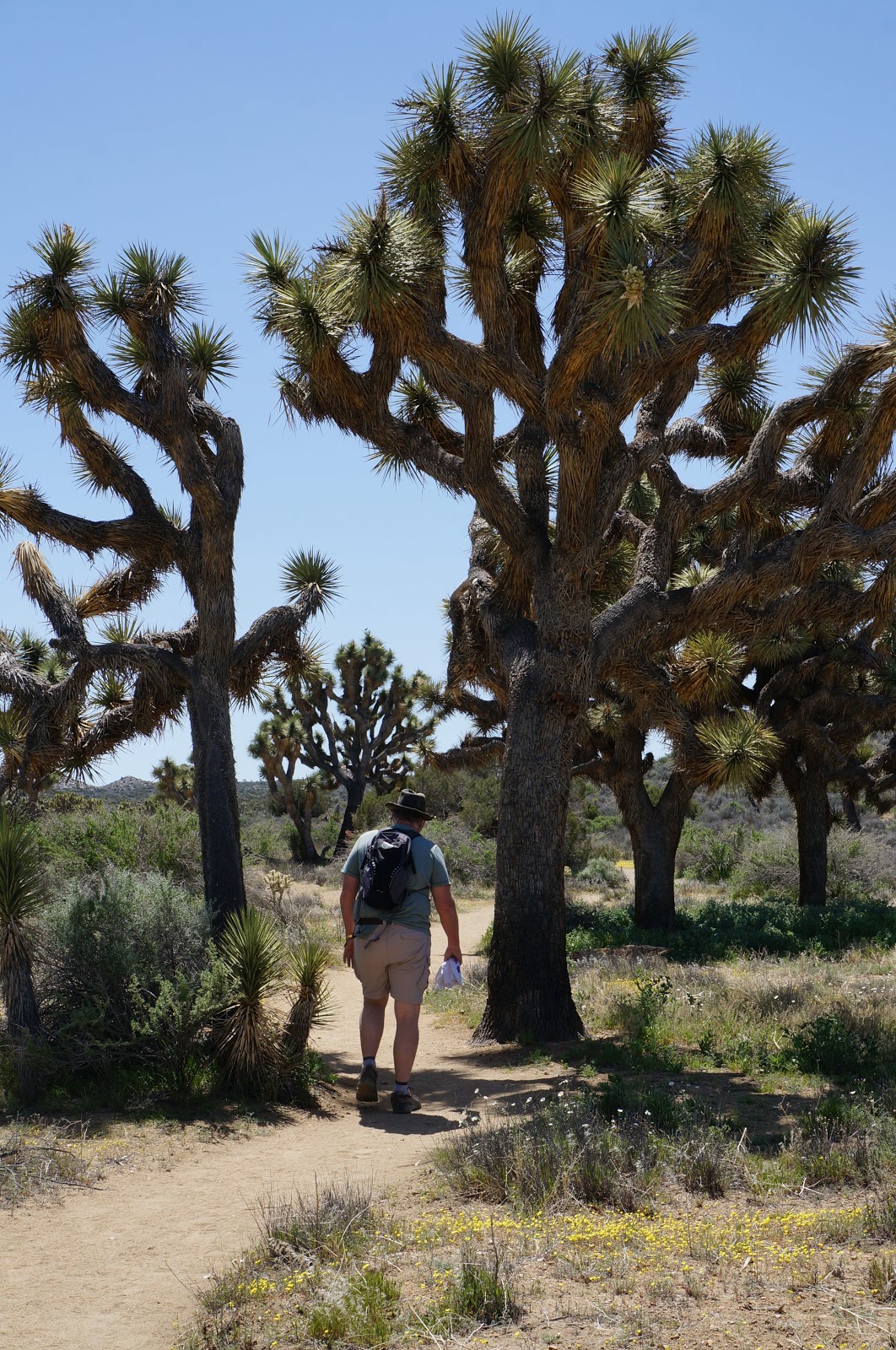
Joshua Tree National Park is also world-renowned for its huge, eroded boulder formations. This rock-enclosed hiking area, Hidden Valley, was used by cattle rustlers to hide their stolen beasts.
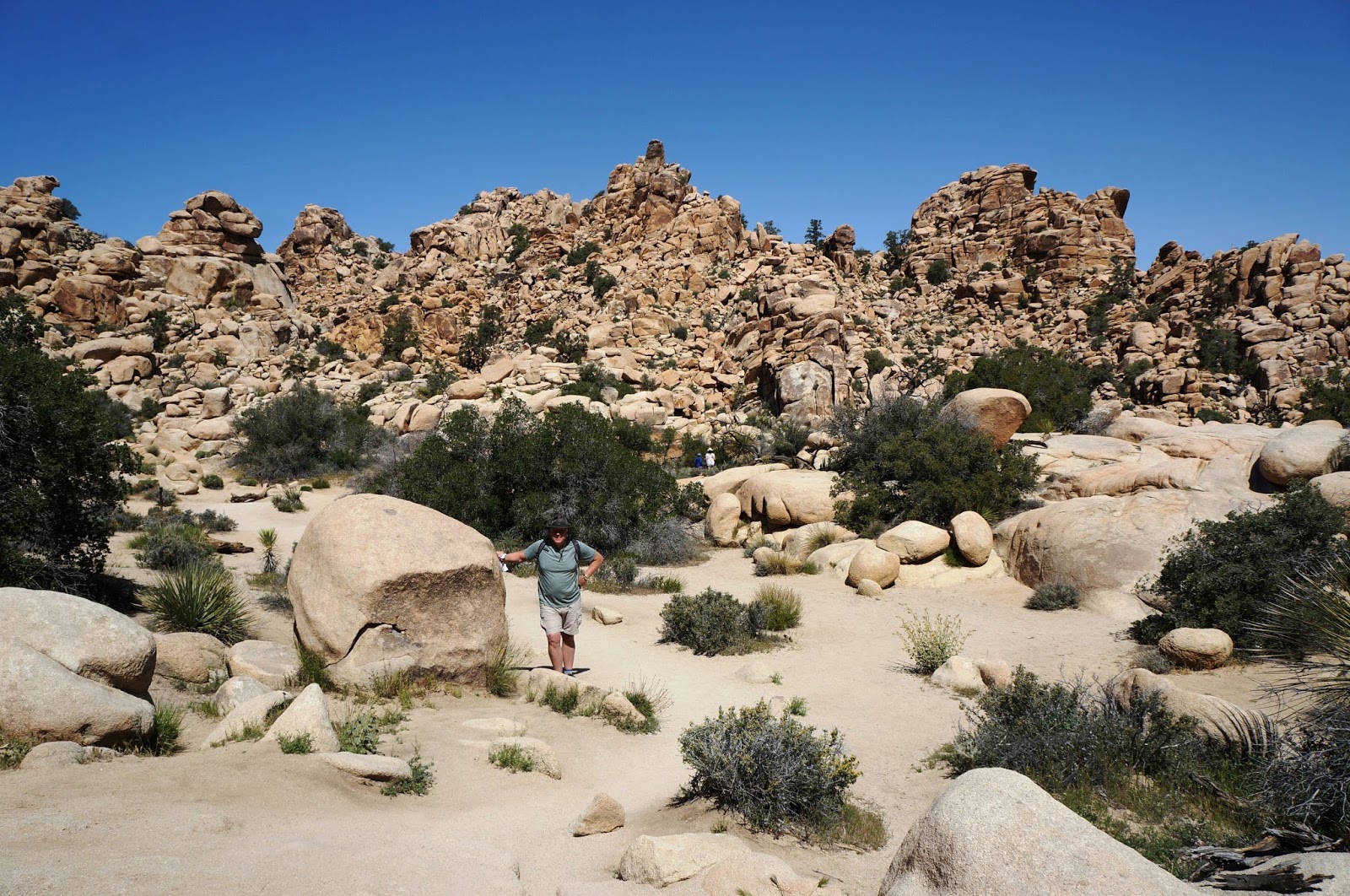
These 250-million-year-old rocks are very popular with rock climbers.
Can you spot the climber in this photo?

Legend has it that Mormon pioneers considered the limbs of the joshua trees to resemble the upstretched arms of Joshua leading them to the promised land.

Mount San Jacinto in the background was still dusted in snow in mid-April.
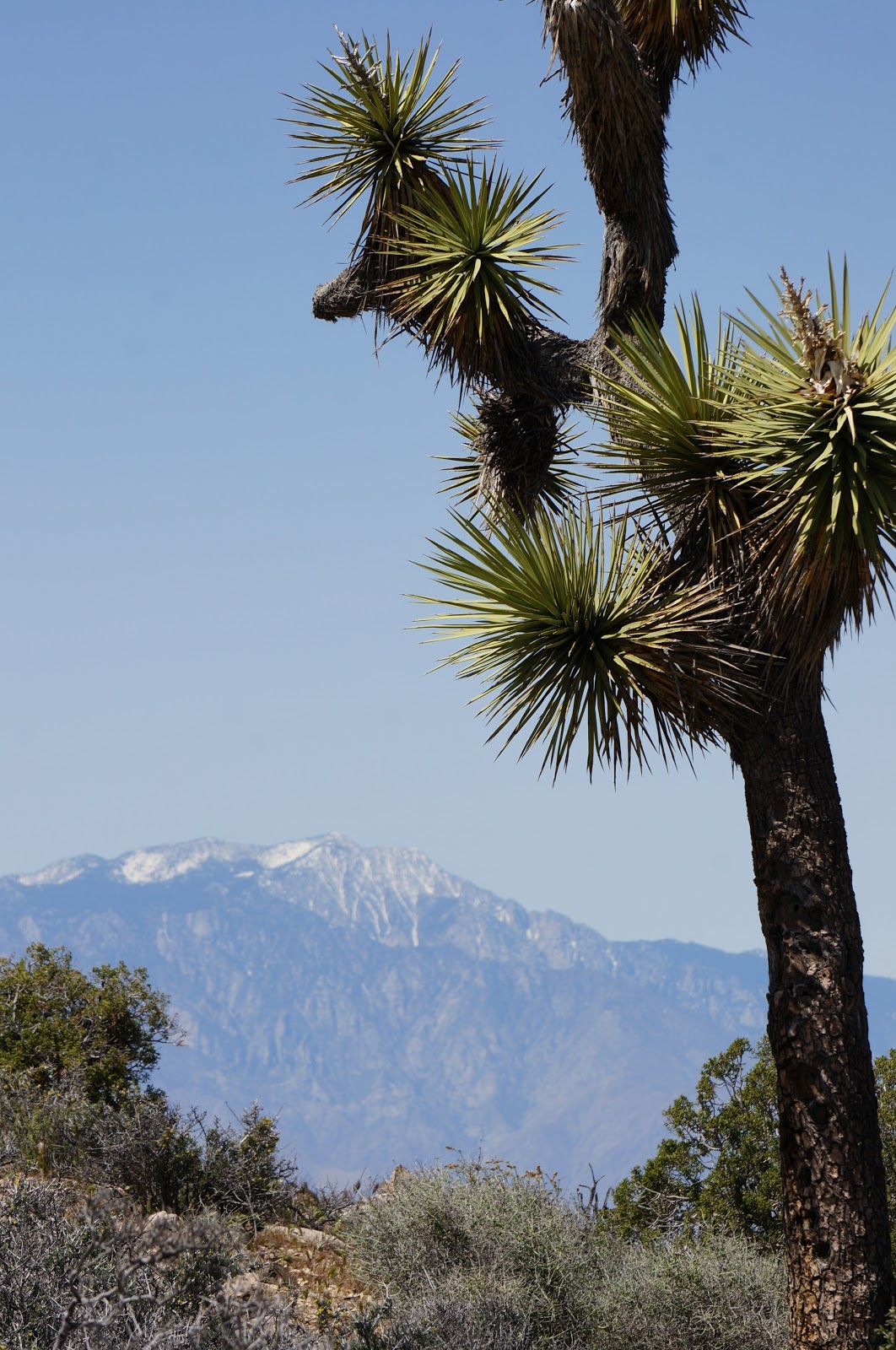
We did see a rattlesnake while hiking, but we knew that if you ignore them, you’ll be fine. To wit: the ranger told us that 80% of snakebites in the park are to males ages 17-25, acting like idiots.

A display of baby rattlers just outside the park also caught our attention 🙂
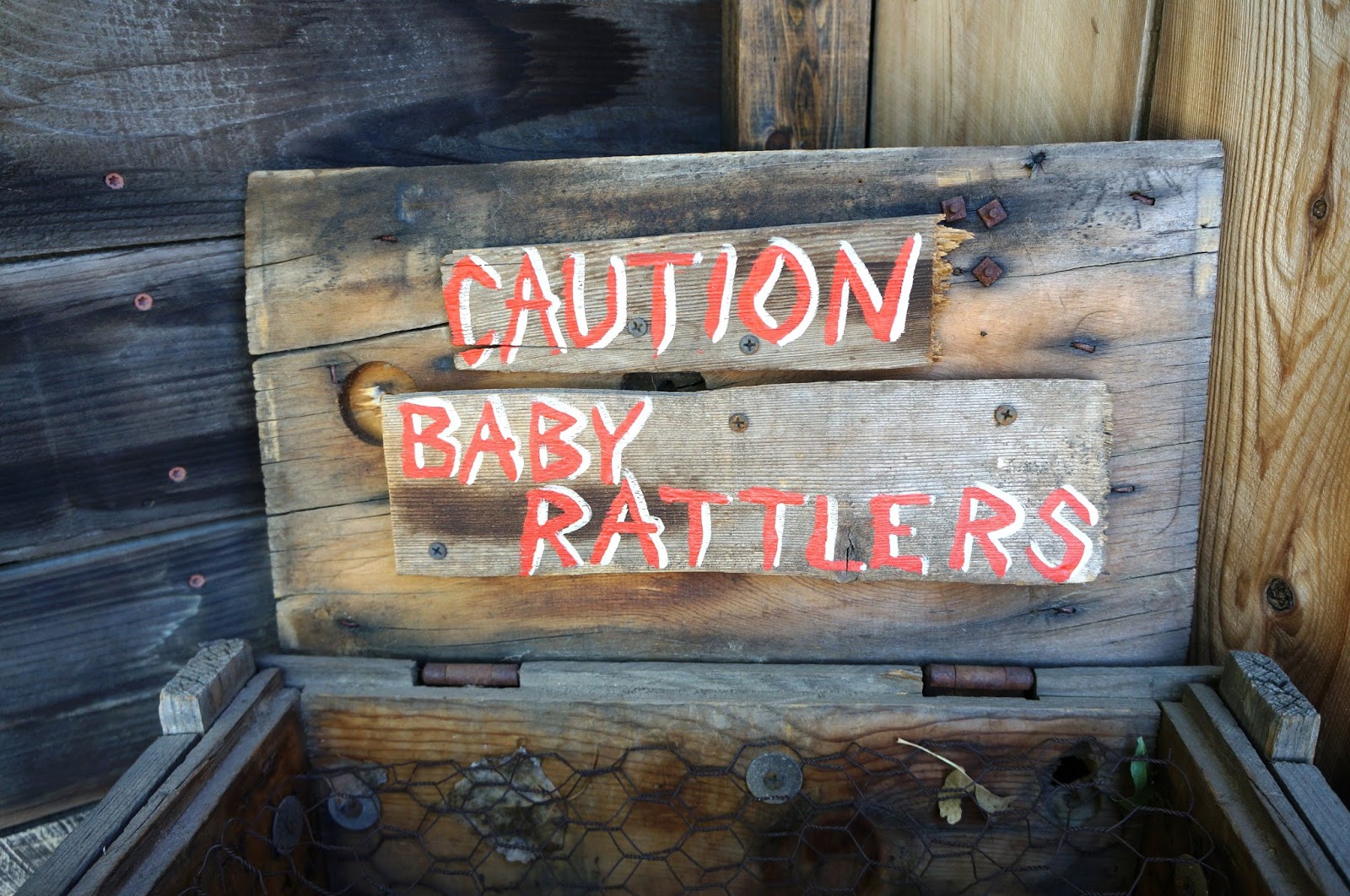

The park itself is “blooming” with visitors, topping 2 million guests for the first time in 2015, a spike some credit to Instagram and an influx of millennials looking to leave hustle-and-bustle behind. Joshua Tree National Park was unlike anything we’ve ever seen before! Very visit-worthy!
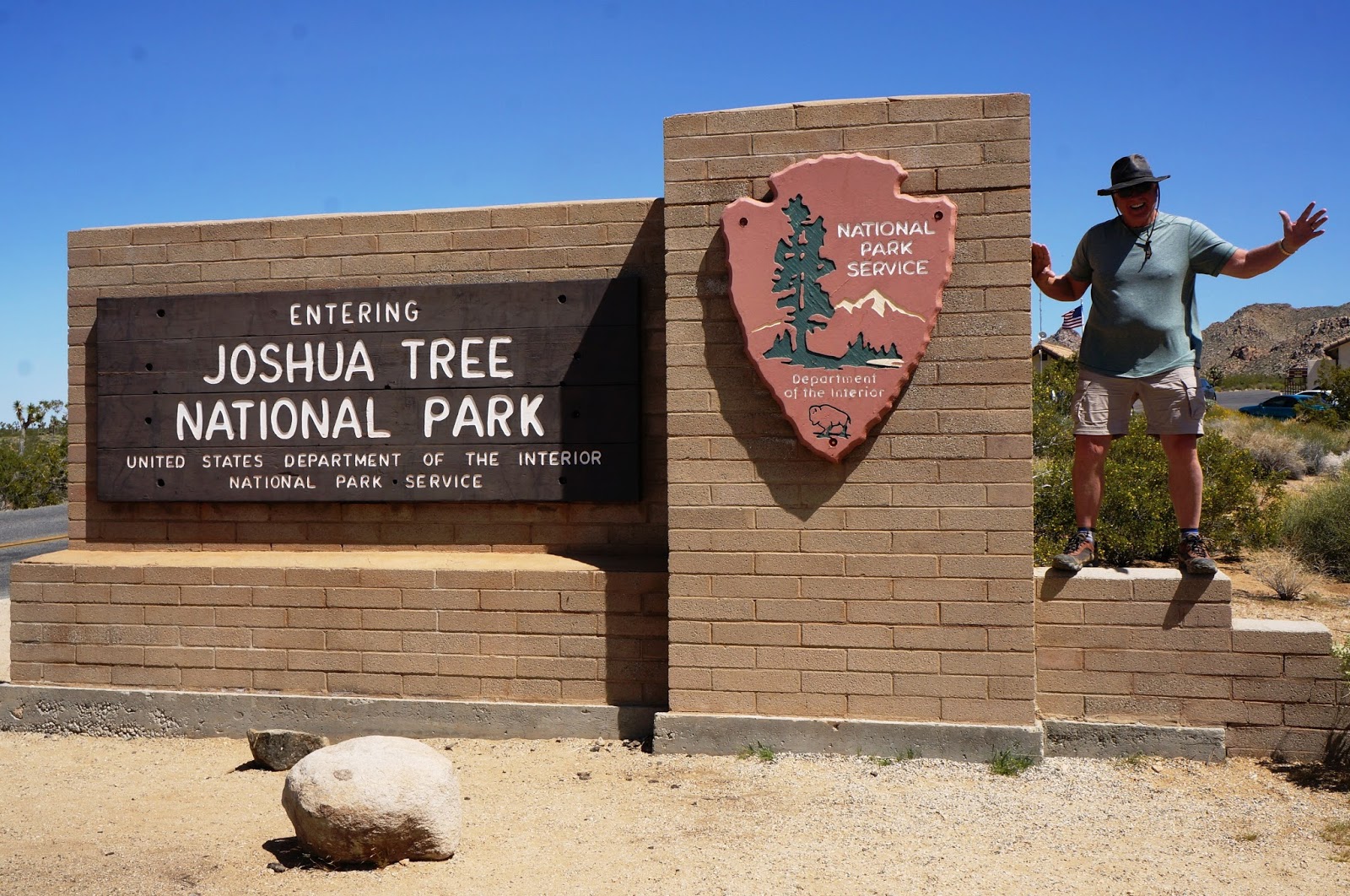
Before heading to the park, we visited a popular brunch spot 20 miles outside the park. La Copine would be easy to miss if not for the crowds gathered each day before they open. (On weekends, people wait hours for a table.)
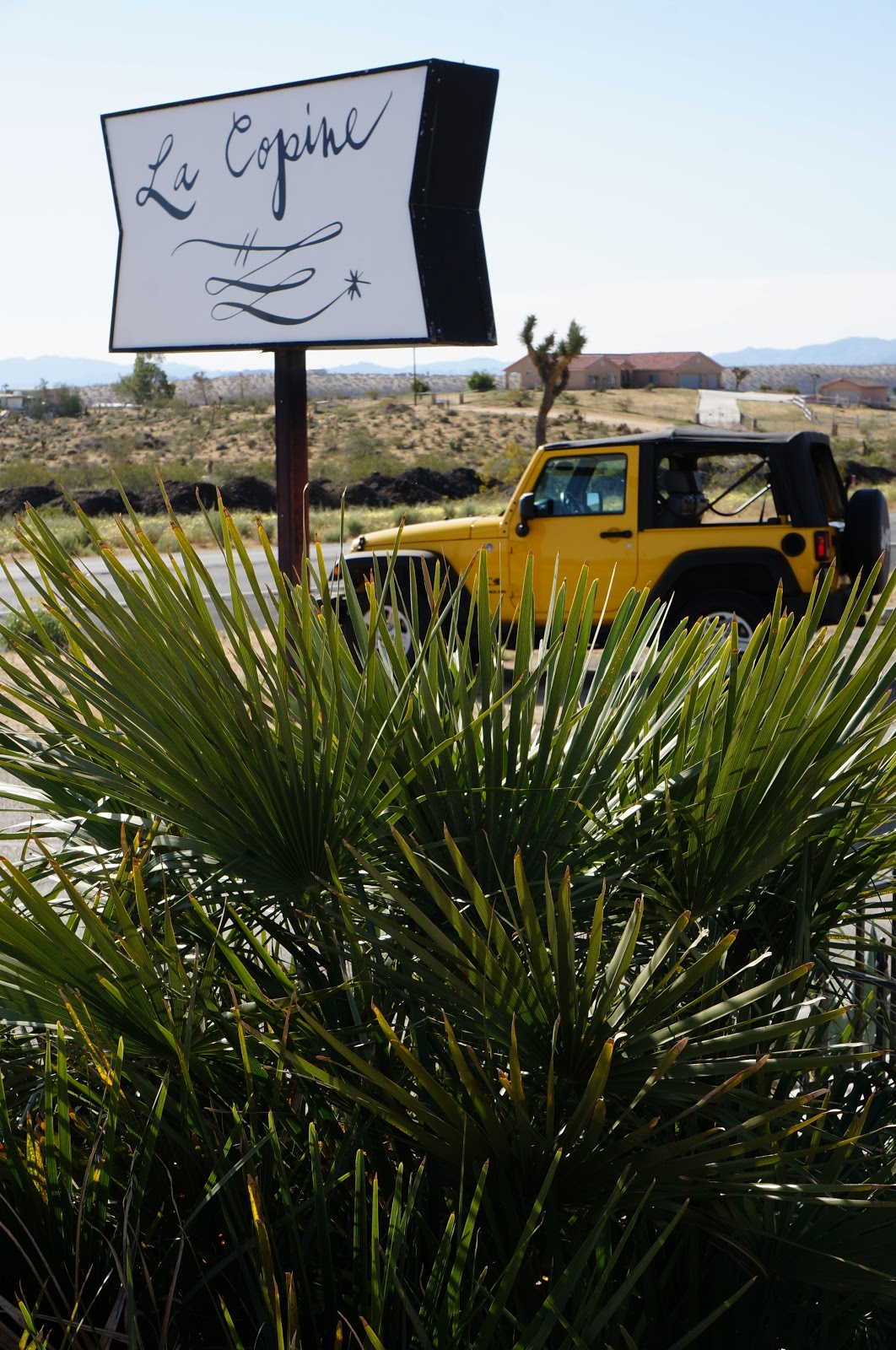
This charming little spot is a prime example of “bloom where you are planted.” Who woulda thunk that a tiny restaurant on a secluded two-lane highway leading to nowhere, would be so popular?


The sausage and English muffins are made in-house, as is the fresh ricotta cheese. And every diner seemed to have an order of fresh, hot homemade beignets in front of them.
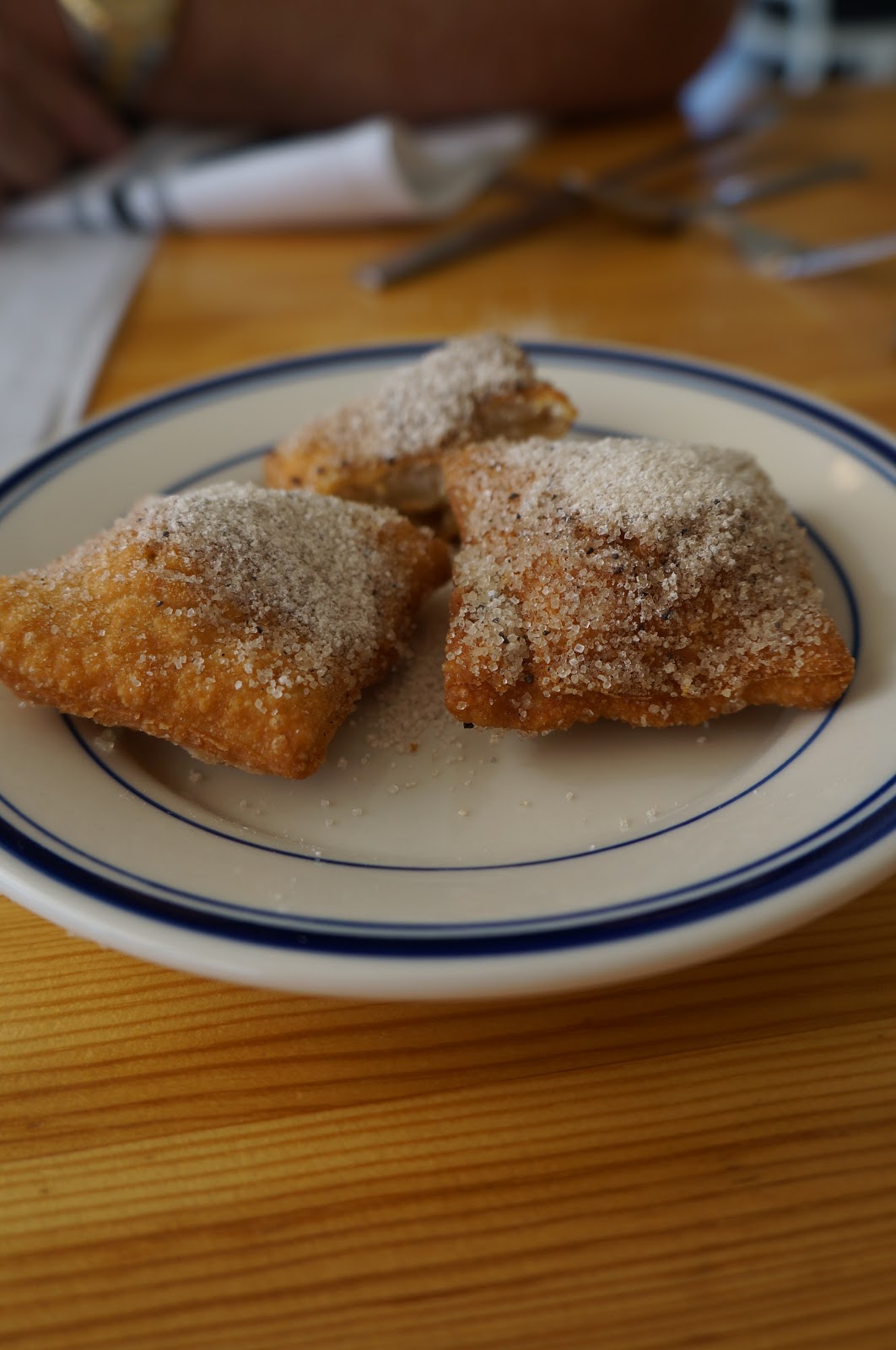

After eating, you can always visit their general store.
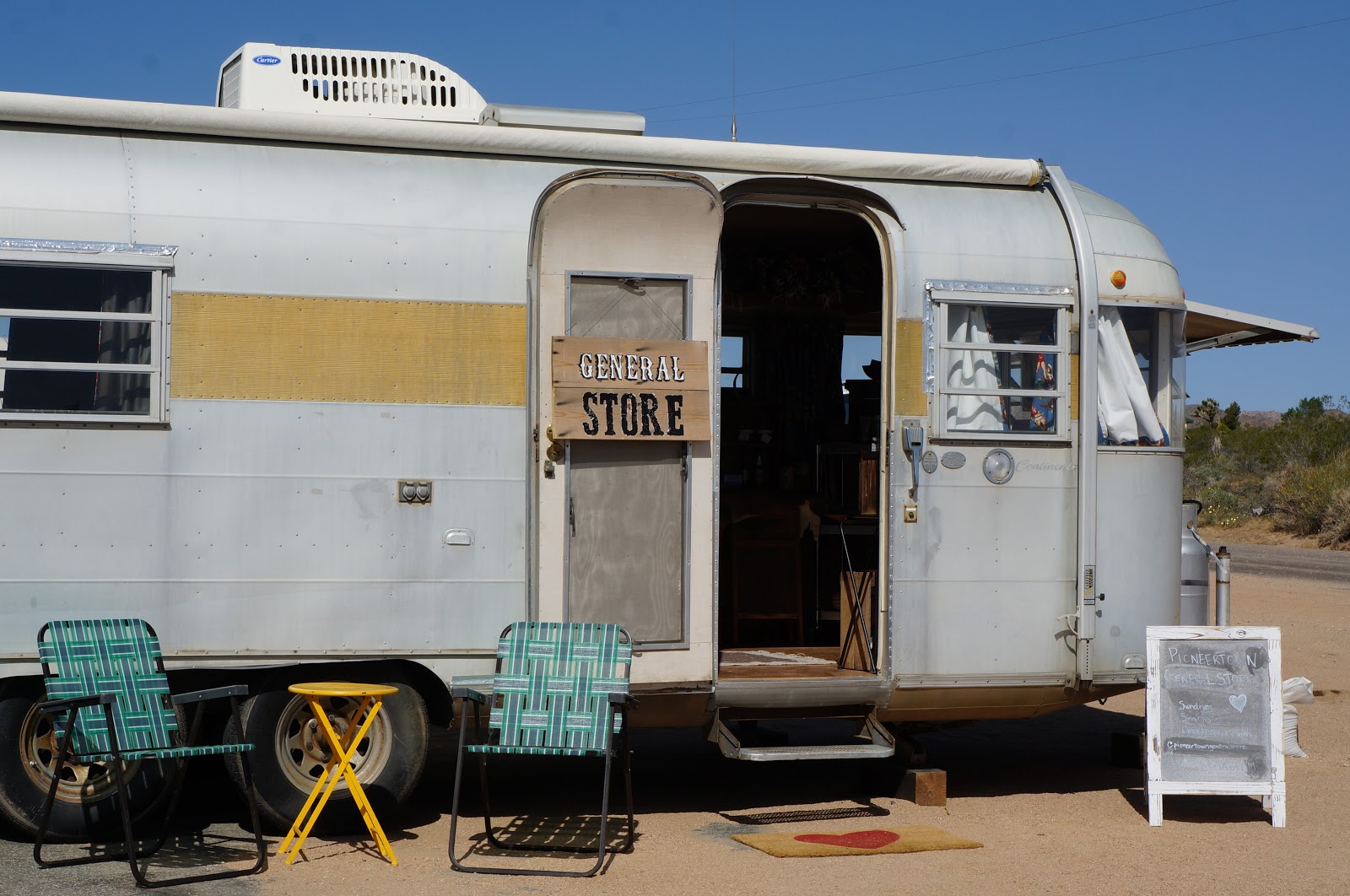
La Copine gave us energy for our day at JTNP, but afterwards we needed to refuel! Preferably with beer! We visited a famous dive called Pappy + Harriet’s, a combo saloon, bar, restaurant and concert venue in the high desert of Pioneertown, a no-longer active old-West movie set used in the 1940’s for filming movies and TV shows, including The Cisco Kid and Judge Roy Bean.
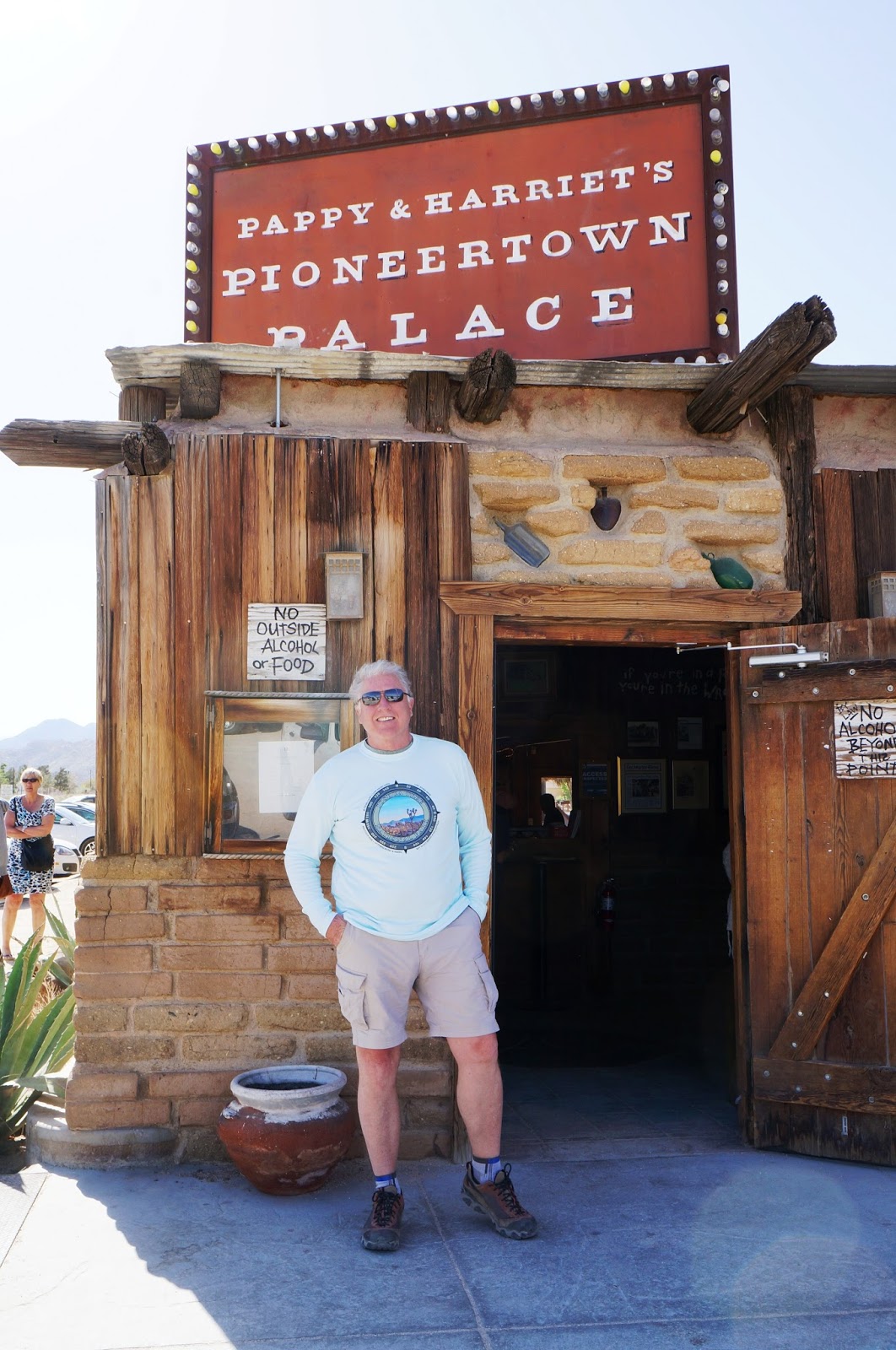
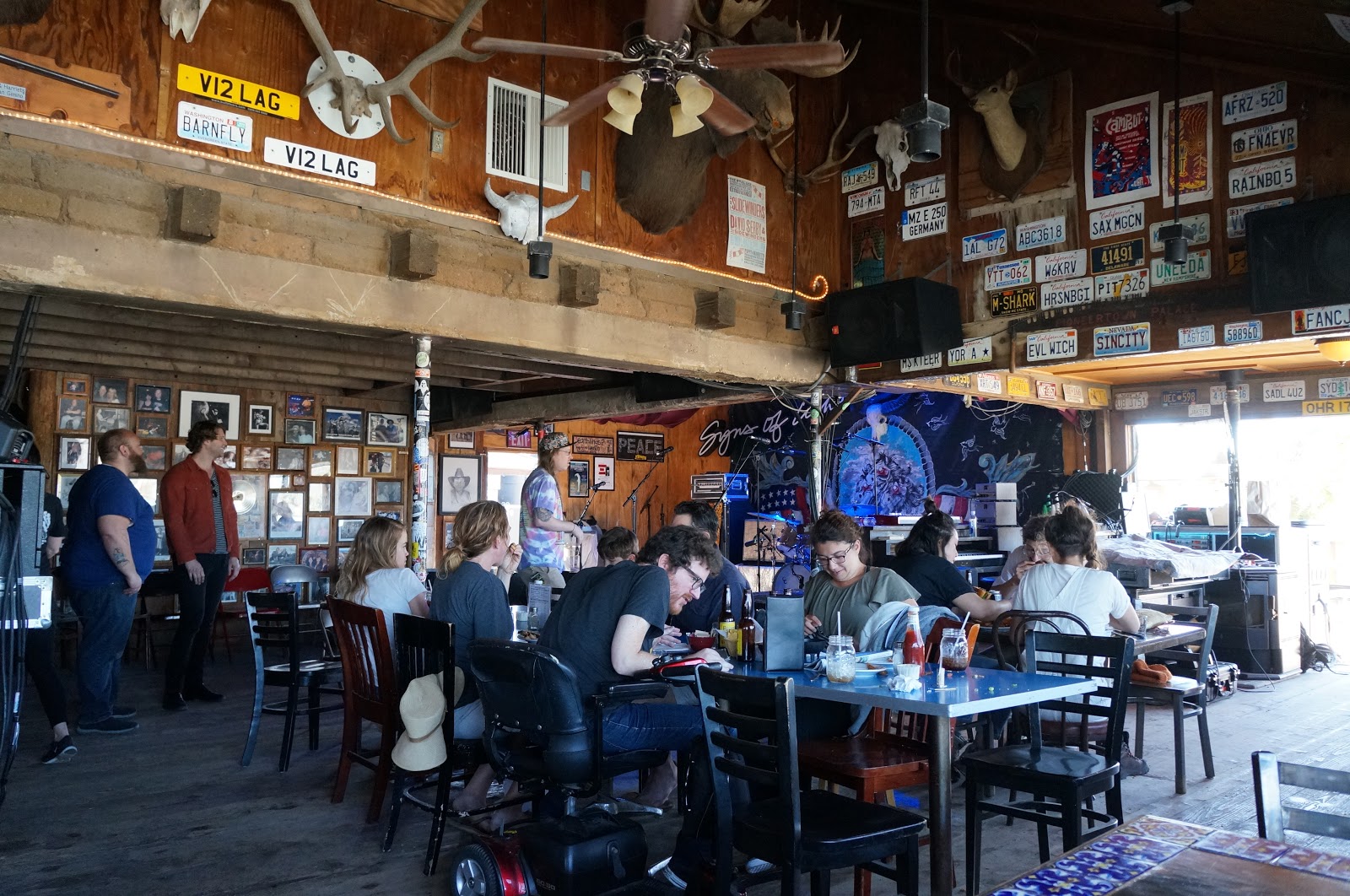
Pappy + Harriet’s also fit the day’s theme of “bloom where you are planted.” They have concerts many nights a week, and tickets sell out months in advance. Many famous artists have made the drive here to the middle of nowhere.
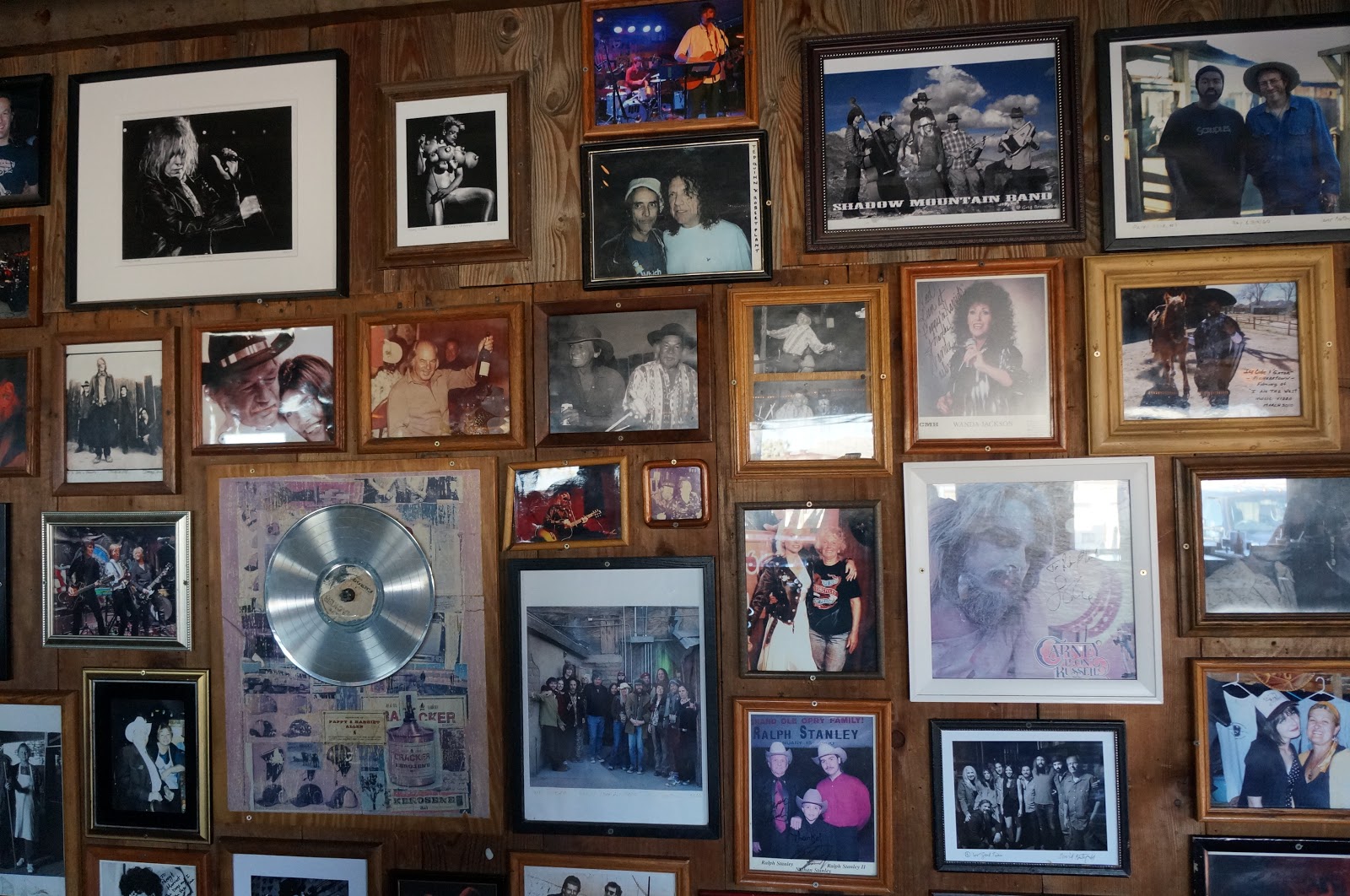
The most celebrated event in their history was when Paul McCartney showed up and jumped on the stage to do a surprise concert for the shocked 300 people shoveling down their bbq sandwiches in the crowd.
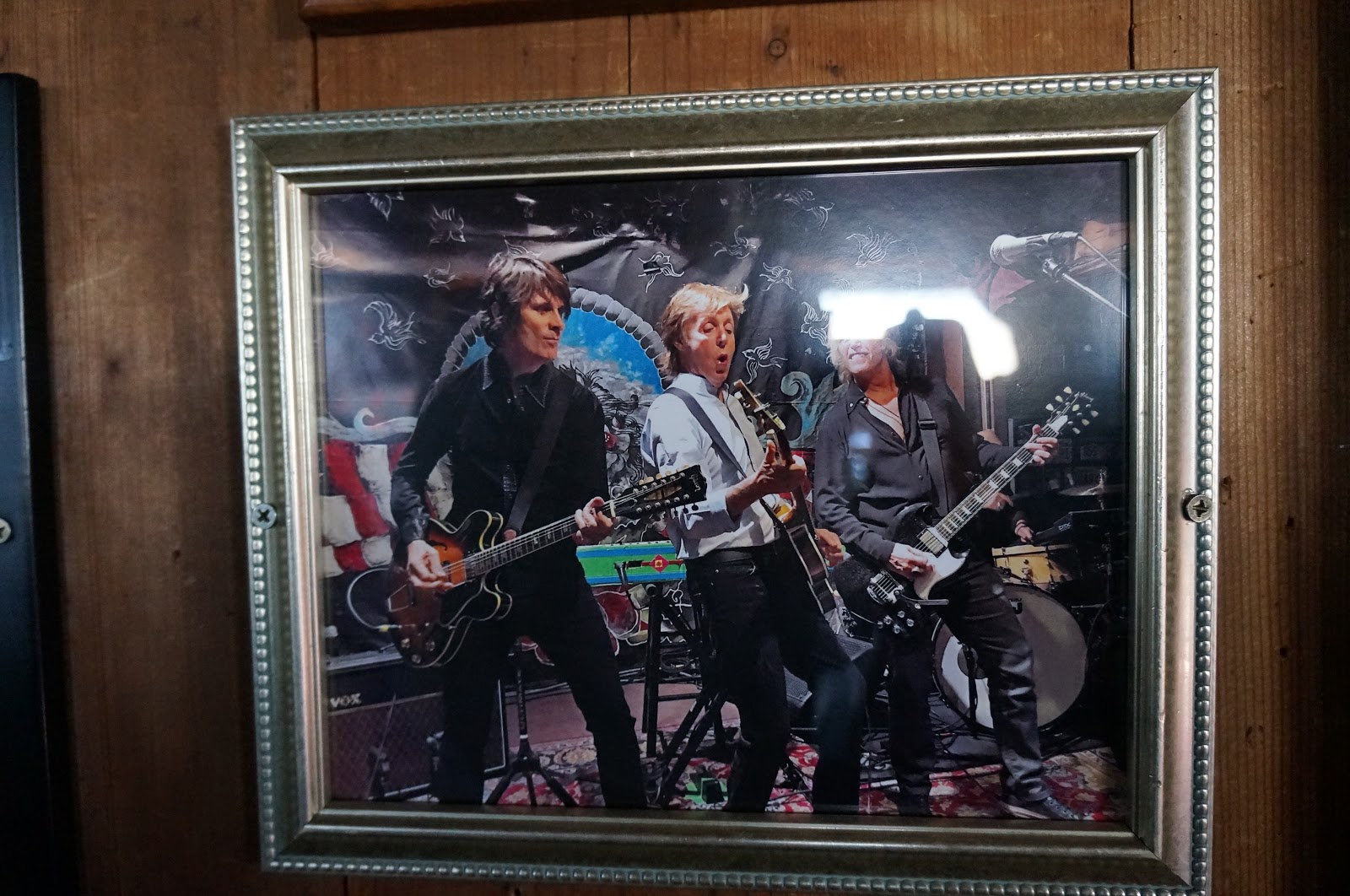
The decor was charming and the food was outstanding.
 |
| Ladies’ Room |
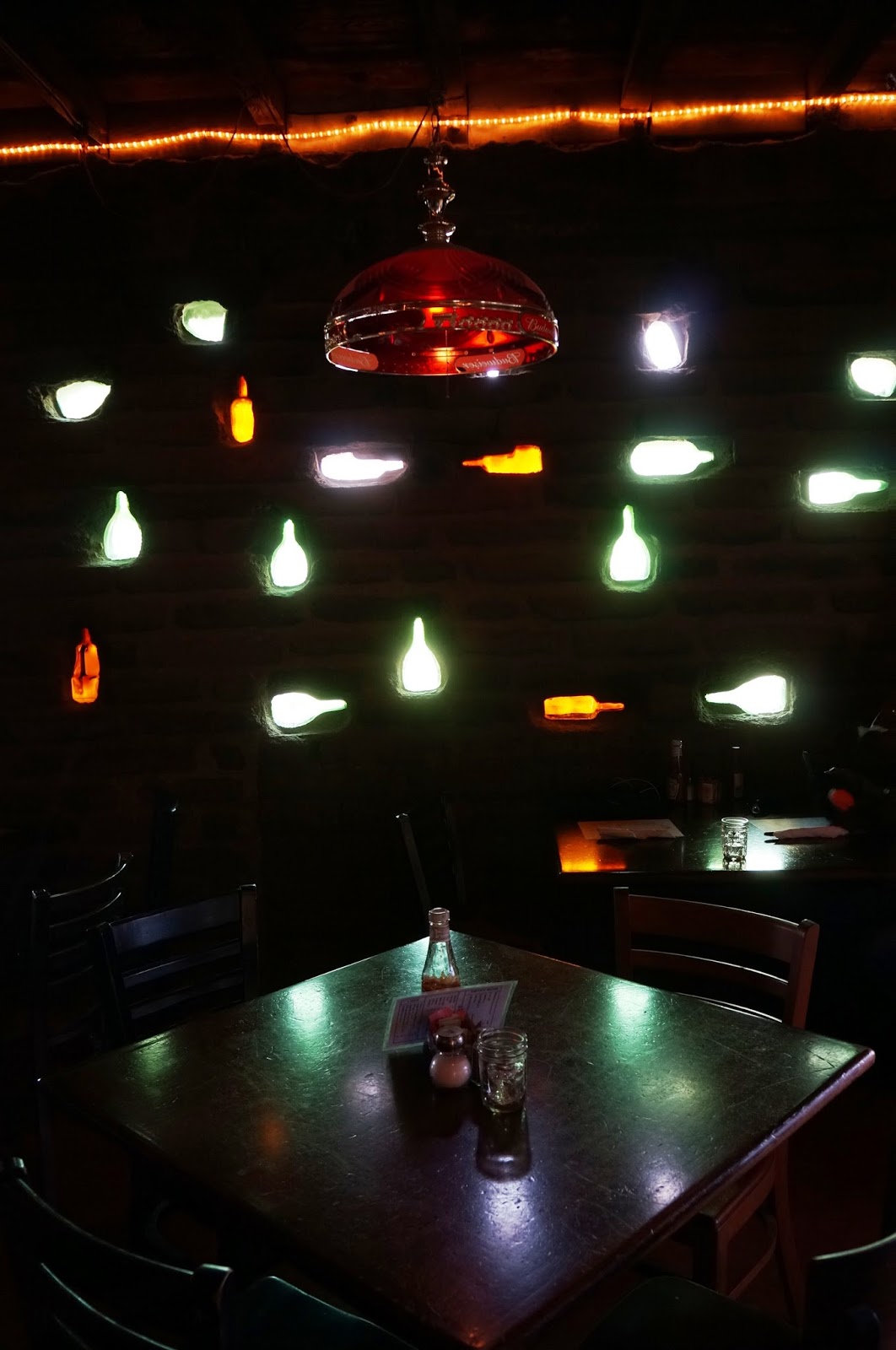 |
| Exterior wall |
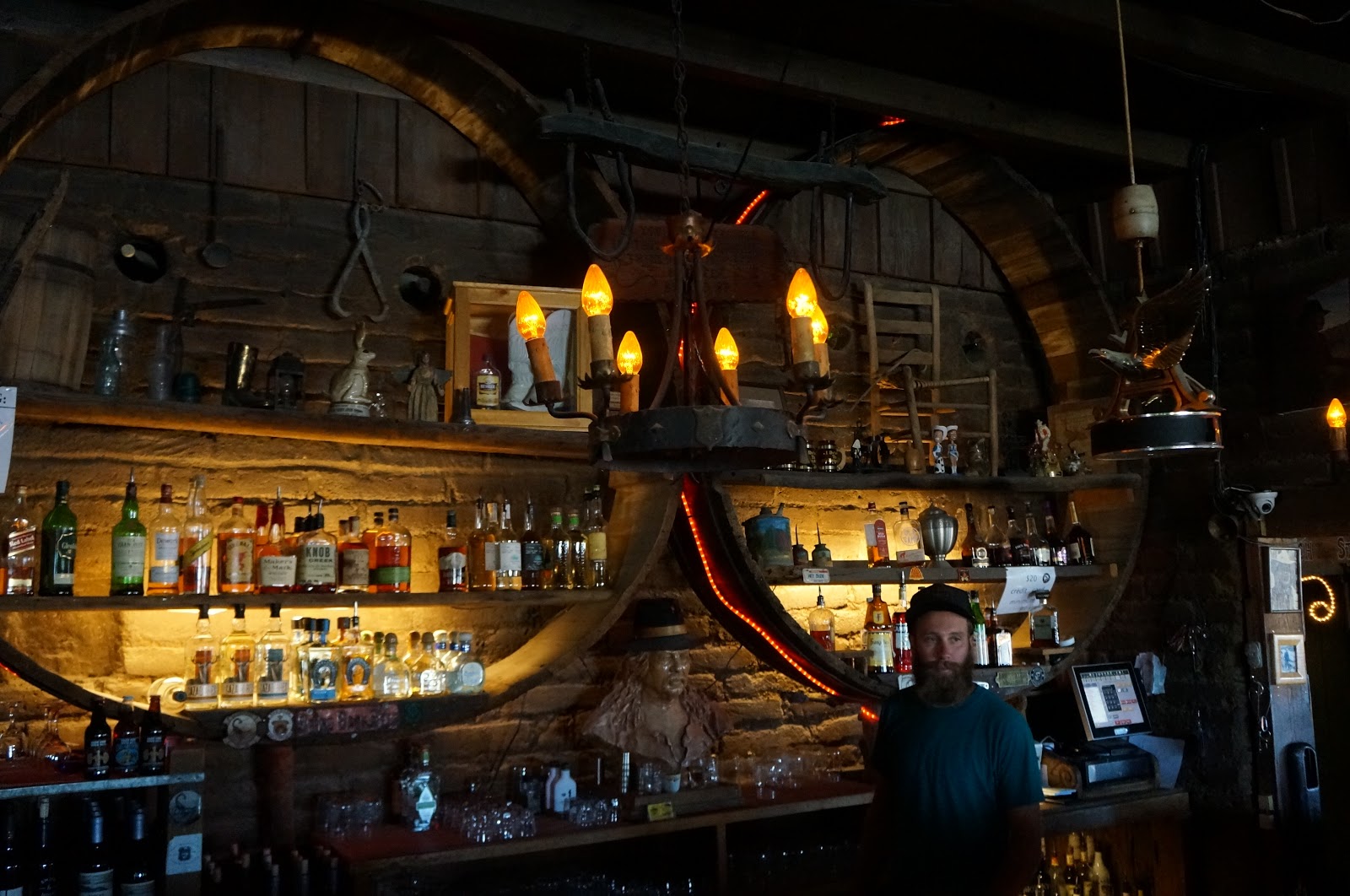 |
| Bar |
The trip back to civilization took us by Palm Springs’ massive San Gorgonio Pass Wind Farm, with over 4,000 separate wind turbines, which provide enough electricity to power Palm Springs and the entire Coachella Valley. The largest of these stands 150 feet tall with blades that are as long as half a football field.

We’ll be “planted” back in Phoenix until late May, when the Lucky Charm heads to Parker, Arizona, along the Colorado River — a great place to try out our new inflatable kayak! Then, our annual six-week summer trip takes us through Idaho, Washington and Oregon. We’re excited to see what’s blooming up that way after this very-rainy spring! Thanks for following along on our adventures!

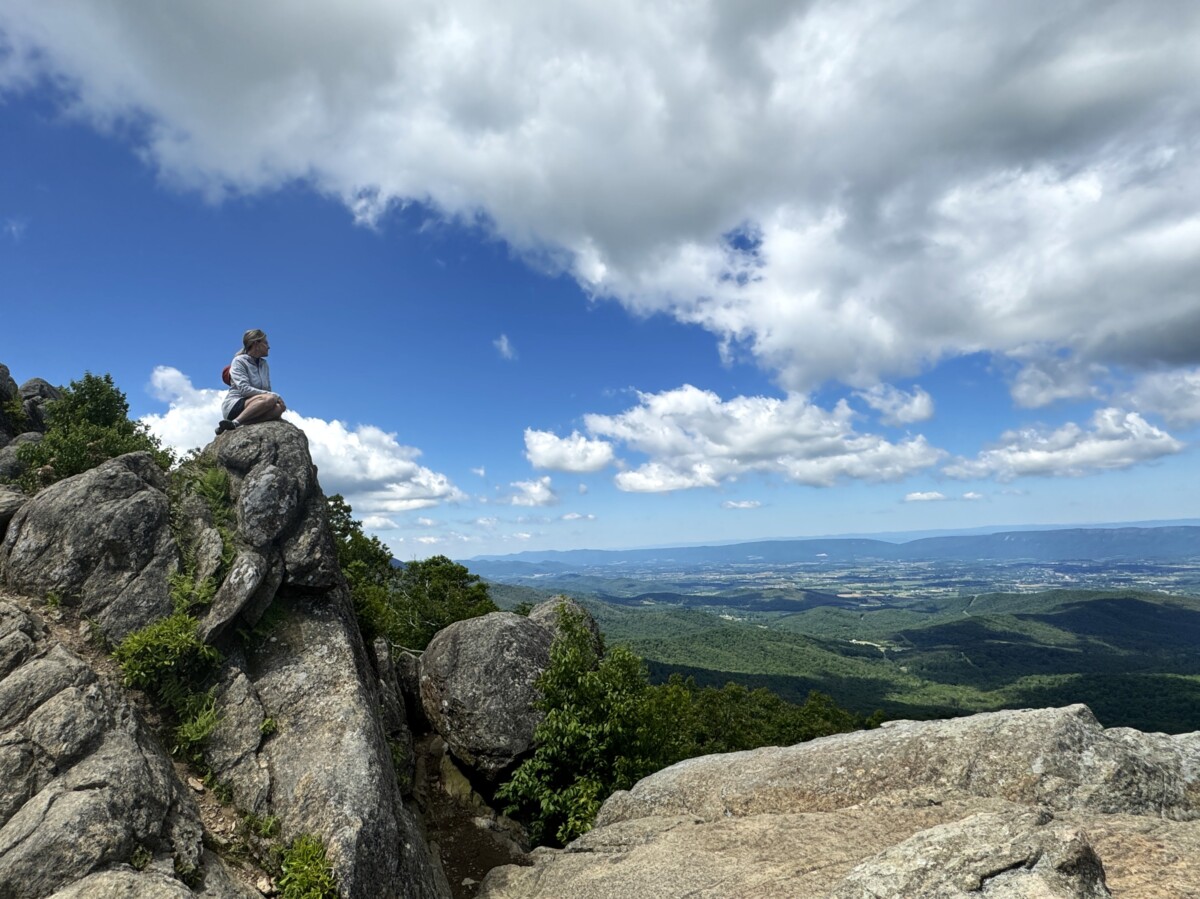
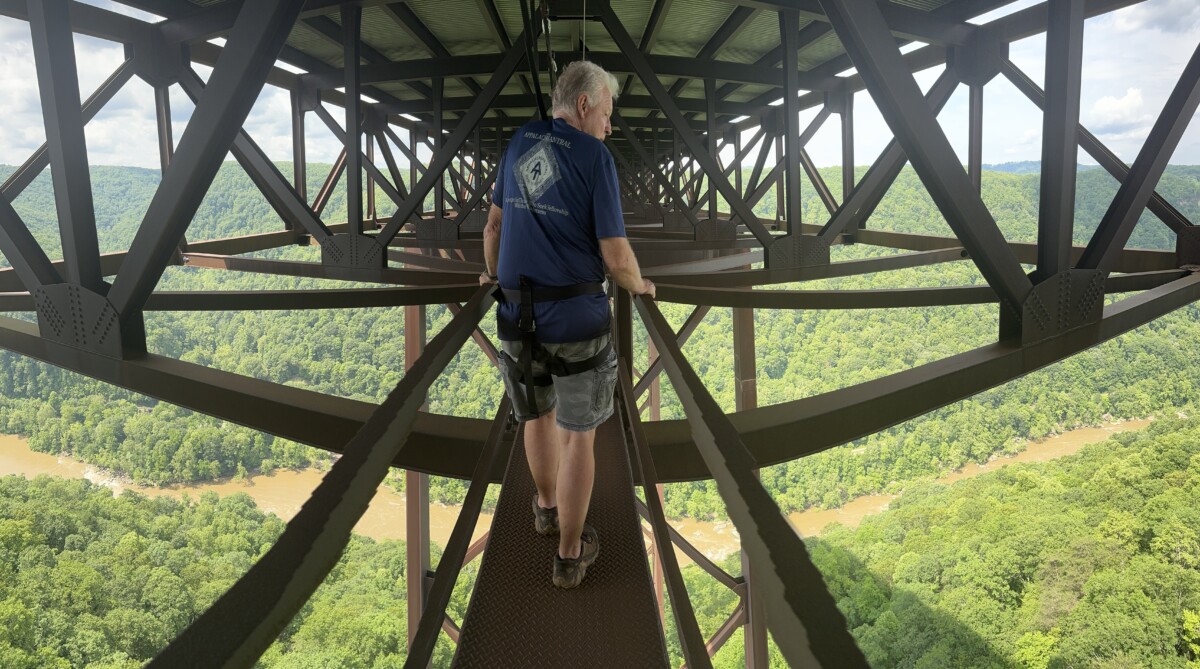
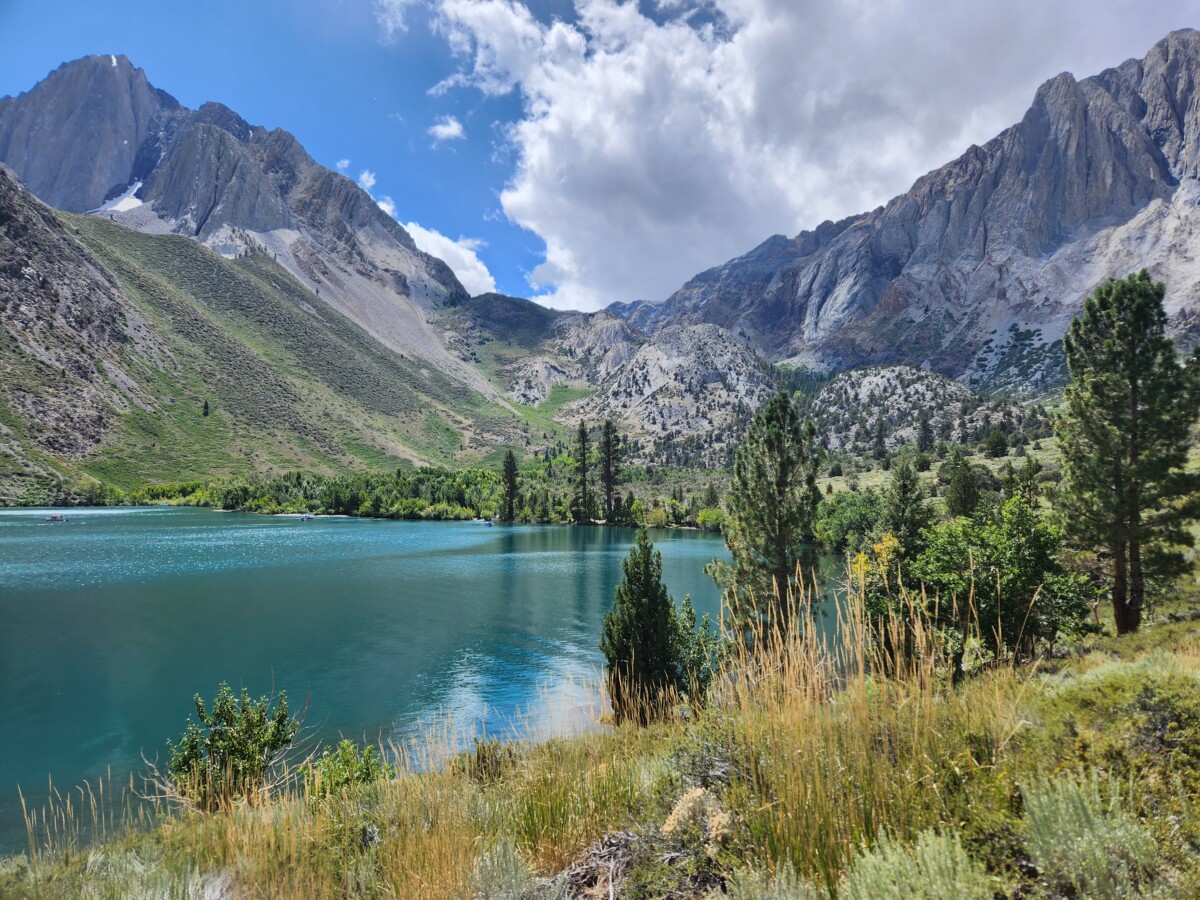
Leave a reply